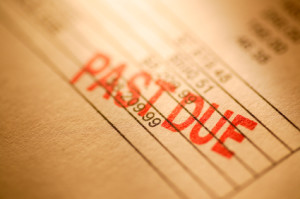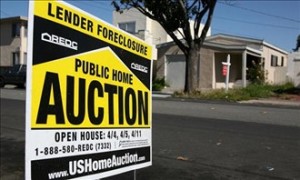Foreclosure laws vary from state to state. Either foreclosures are judicial, which means they need court approval or non-judicial (private Trustee Sales). Once the homeowner falls behind in their monthly mortgage payments, the lender will institute some type of action against the homeowner to reclaim the property. Generally, the homeowner is behind at least three months in their mortgage payments. Because the lenders are so overwhelmed with defaulted loans, the process may take slightly longer before the lenders start the foreclosure proceedings these days.
The Beginning (Pre-Foreclosure)
 The lender will send out written notices letting the homeowner know how much they owe and how far behind they are on their mortgage payment. At this point, the homeowner should contact the lender if they have not done so already and see if they can work out a payment plan such as a mortgage modification or refinance, reinstatement, etc. to catch up on the payments, or sign back the home to the lender with a deed in lieu of foreclosure. In some instances, the homeowner will decide to sell their home in a short sale, asking the lender to take a reduced amount on the mortgage balance. If the homeowner does have equity, then they will be able to sell the home and pay off the mortgage.
The lender will send out written notices letting the homeowner know how much they owe and how far behind they are on their mortgage payment. At this point, the homeowner should contact the lender if they have not done so already and see if they can work out a payment plan such as a mortgage modification or refinance, reinstatement, etc. to catch up on the payments, or sign back the home to the lender with a deed in lieu of foreclosure. In some instances, the homeowner will decide to sell their home in a short sale, asking the lender to take a reduced amount on the mortgage balance. If the homeowner does have equity, then they will be able to sell the home and pay off the mortgage.
Where none of the above solutions can be negotiated, the lender will start foreclosure proceedings by either filing a notice of lis pendens with the court (judicial proceedings), or filing a notice of default (non-judicial proceedings), serving all parties, and publishing the required notices in the newspaper of general circulation in the county where the property is located.
Keep in mind though that lenders would rather resolve the default with the borrower then institute foreclosure proceedings because the average foreclosure costs the lender approximately $50,000.00.
Middle (Redemption Period)
During the time the proceeding is instituted, the borrower has a statutory period of time to respond and defend themselves against the foreclosure, and/or to redeem the property prior to the sale or reinstate the loan by paying the arrears and any fees and costs. The redemption periods are based upon state statutory law.
 In a judicial foreclosure proceeding, the court will issue an order for the sale of the property. In a non-judicial proceeding, the trustee will record a notice of sale with the county recorder’s office. The notice of sale in both proceedings will be published in a newspaper of general circulation in the county where the property is located. A notice of the sale will also be posted at the courthouse and at the property with the information about the date of the sale and the contact person or if the sale has been postponed.
In a judicial foreclosure proceeding, the court will issue an order for the sale of the property. In a non-judicial proceeding, the trustee will record a notice of sale with the county recorder’s office. The notice of sale in both proceedings will be published in a newspaper of general circulation in the county where the property is located. A notice of the sale will also be posted at the courthouse and at the property with the information about the date of the sale and the contact person or if the sale has been postponed.
End (Foreclosure Auction)
 The last stage of the foreclosure process is the foreclosure auction sale, which is typically conducted at the courthouse steps or some other place designated by the sheriff or trustee. This again depends upon what type of foreclosure action is instituted and the laws of each state.
The last stage of the foreclosure process is the foreclosure auction sale, which is typically conducted at the courthouse steps or some other place designated by the sheriff or trustee. This again depends upon what type of foreclosure action is instituted and the laws of each state.
The highest bidder will be awarded the property. Generally the bidder is required to bring a cashier’s checking representing 10% of the purchase price in order to bid. Some states require the entire amount of the bid to be paid at the end of the auction. Title will then be transferred to the new buyer. The new buyer takes the property in an as is condition and will have to clear any title issues, evict any tenants or owners still remaining on the property, and will not be able to obtain title insurance.
Note: Some states also allow the lender to file a deficiency judgment against the former homeowner/borrower for the difference in the amount the borrower owed on their mortgage and what the property sold for at the foreclosure auction.
If there are no successful bidders at the foreclosure sale auction then the bank acquires the property back and it becomes a bank owned property or real estate owned (REO). At this point, the title and back taxes and liens will be paid off by the bank. The time period between the sale and actually listing the property could be as long as a few months or more until the property is ready to be marketed. Sometimes the bank will make repairs to put the property in a condition that it can be sold, such as repainting and replacing carpet.
The property will then be listed with a Realtor who will market it through the local MLS and other resources to attract buyers to sell the bank owned property. Title insurance will be able to be obtained by the new buyer, and the buyer will be able to conduct an inspection of the property. REO properties are sold in an “as is” condition. Bank owned properties are usually priced at or slightly below market value.
